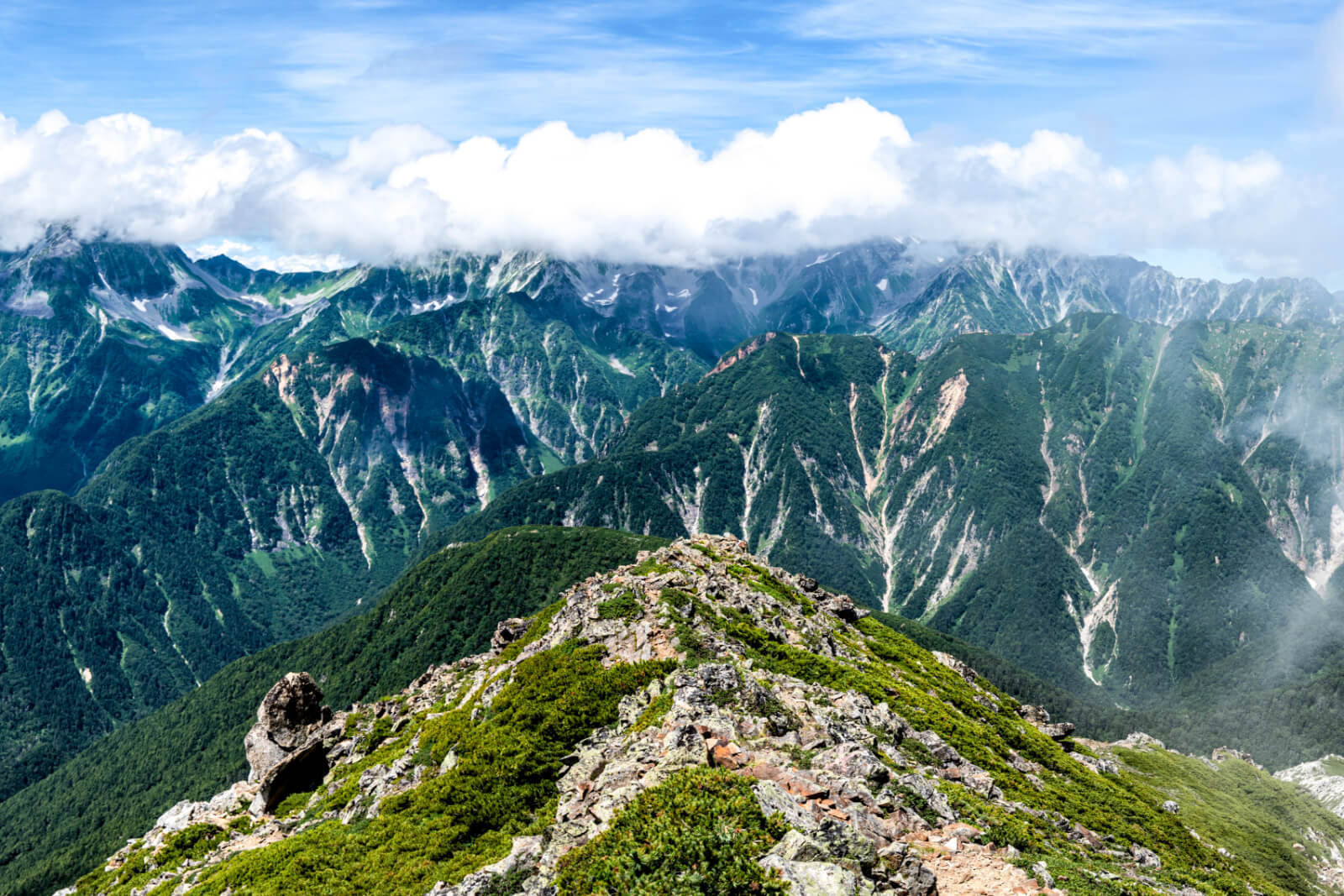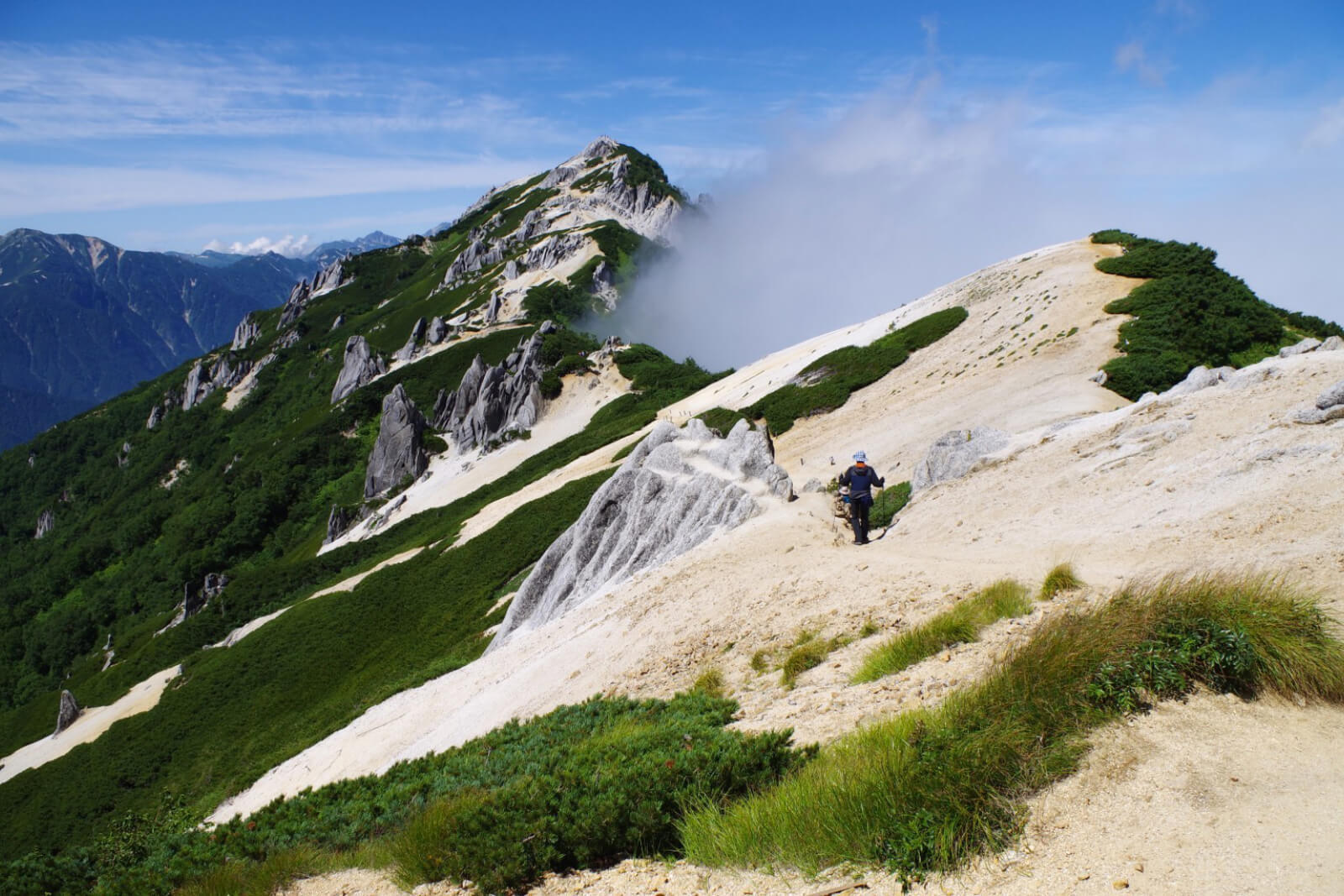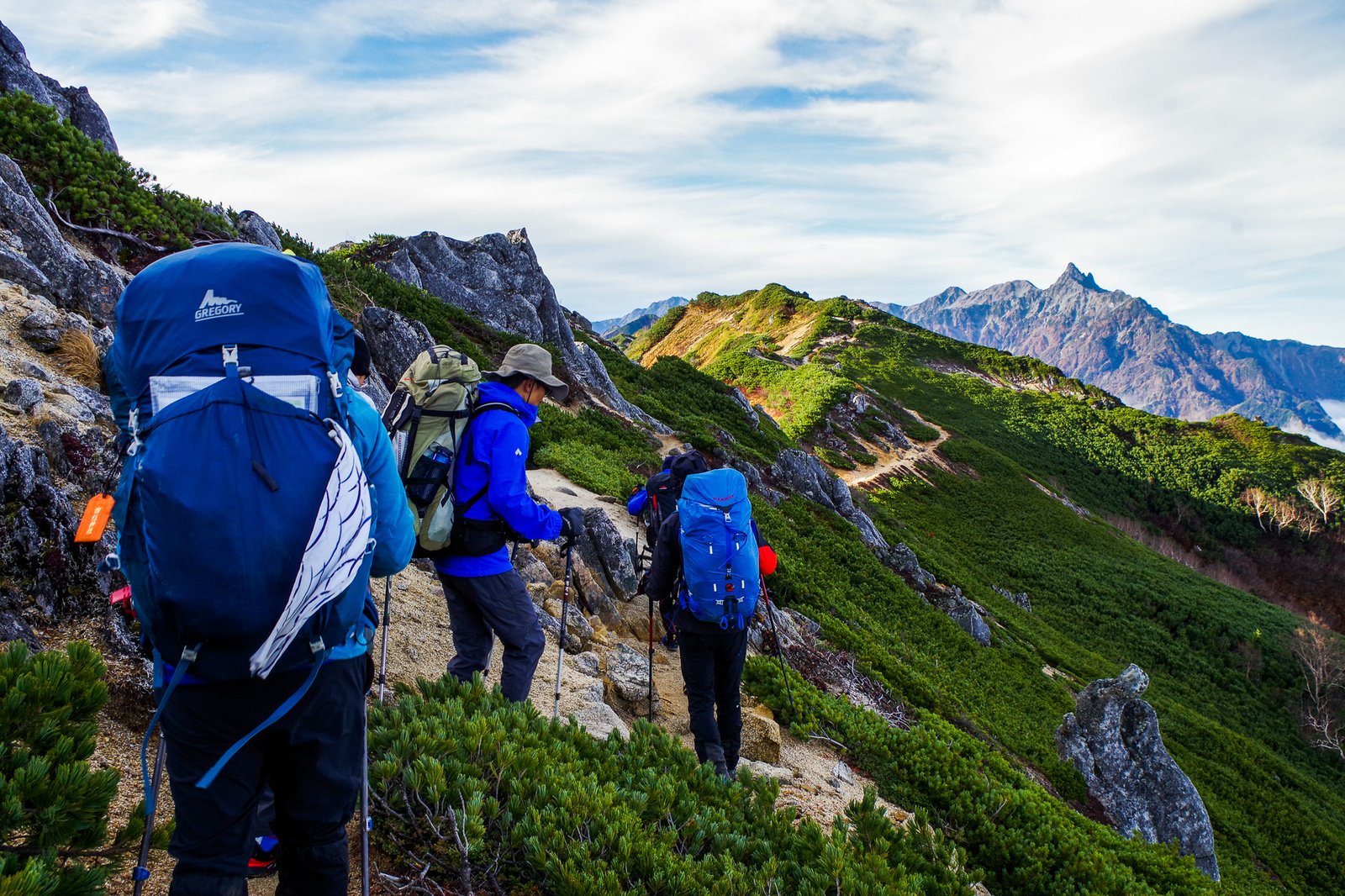
The Northern Japanese Alps are home to some of the country’s tallest mountains, reaching heights of over 3,000 meters high. Here, on the roof of Japan, you'll find majestic peaks and idyllic national parks replete with crystal-clear rivers and verdant forests.
Mountain climbing is a popular outdoor activity in Nagano, especially around these parts. Adventurous climbers and nature enthusiasts come from all around Japan to summit these mountains and enjoy their breath-taking scenery.
We’ve put together some of the Northern Alps most iconic mountain climbs below:
Hiking Routes in the Northern Japanese Alps
One Day
One to Two Days
Two Days or More
Three Days or More
One Day Hikes
Mt. Norikura
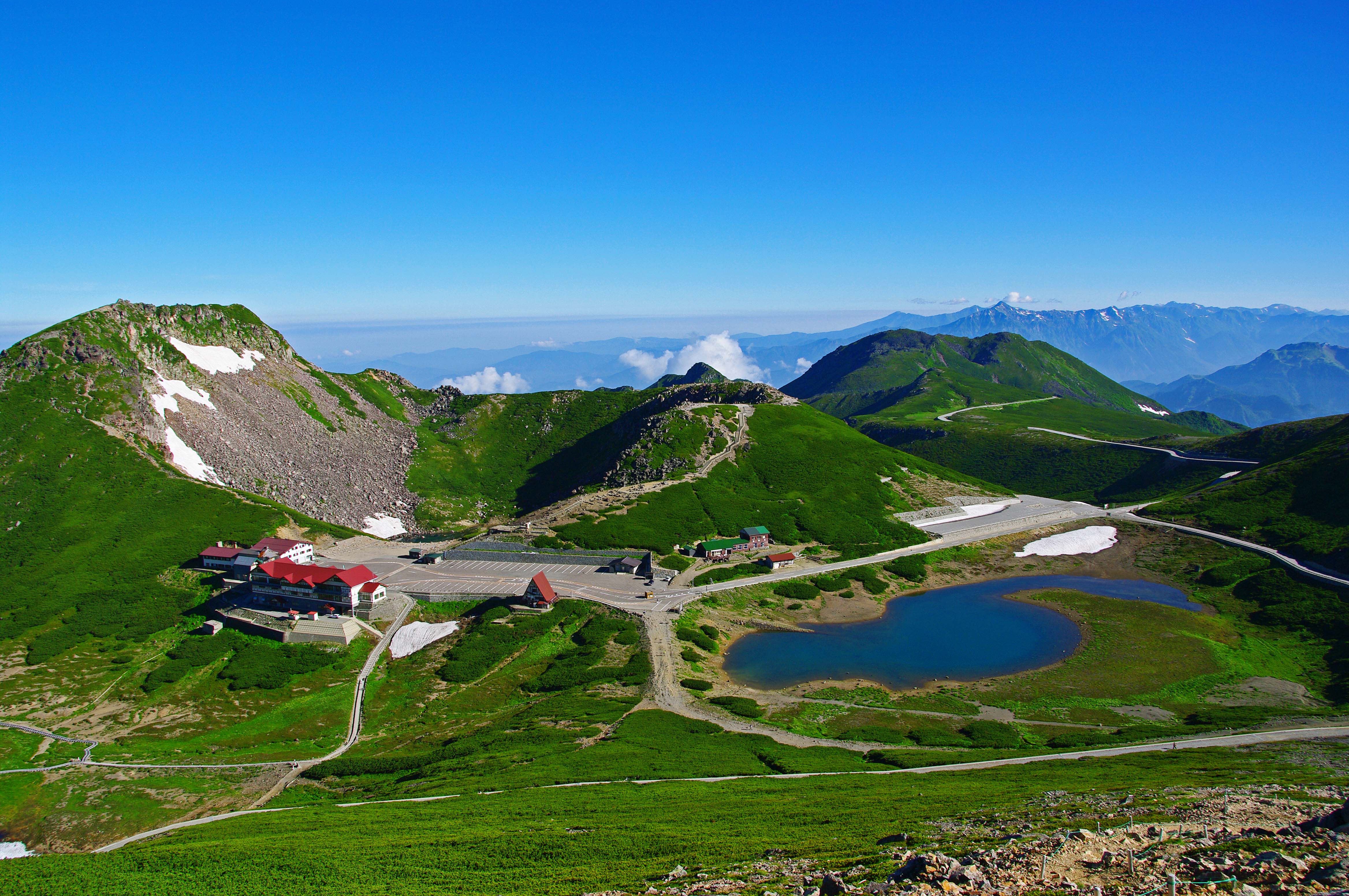
Mt. Norikura is part of the Northern Japanese Alps and is accessible from Matsumoto City by bus. Starting from the Tatamidaira bus stop at 2,702 meters high, it’s only an hour and a half to the top of the mountain—probably the easiest 3,000-meter-high mountain to climb anywhere in Japan.
From the top of the mountain, you can see Northern and Central Japanese Alps, the Yatsugatake mountains, Mt. Ontake, and even Mt. Fuji if the weather is clear! Just below the peak is a peaceful crater lake called Gongen-ike (the second highest in Japan at 2,840 meters).
And even after climbing this 3,000-meter-high peak, you still have over half the day left for sightseeing or leisurely soaking in a nearby hot spring.
When to Go
July to October (Tatamidaira Bus operating period)
Details
Read more about climbing Mt. Norikura on Alpico's website
Mt. Karamatsu and Happo Pond
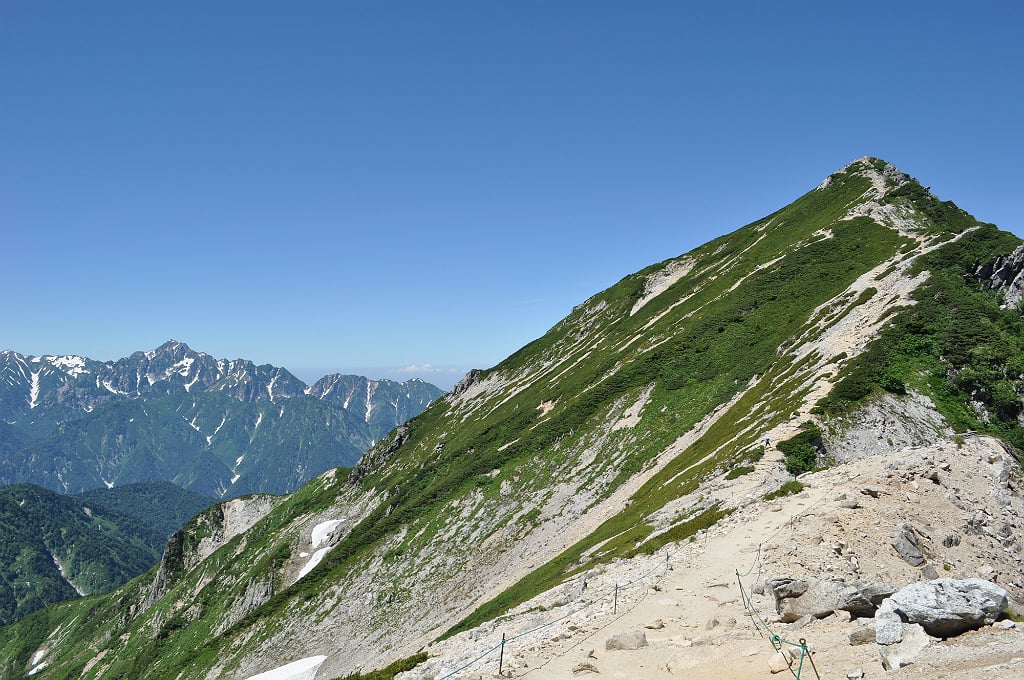
The ridgeline that climbs from Hakuba Happo One to 2,696-meter-high Mt. Karamatsu is one of the most scenic areas of the Hakuba Valley and is serviced by the Hakuba Happo One alpine lift (open June to October).
Outdoor enthusiasts flock here every summer to visit Happo Pond, which is only a 90-minute climb from the top of the lift using well-maintained trails. When still, it clearly reflects the peaks of the Hakuba Sanzan mountains (Mts. Hakuba Yari, Shakushi and Shirouma) in its waters.
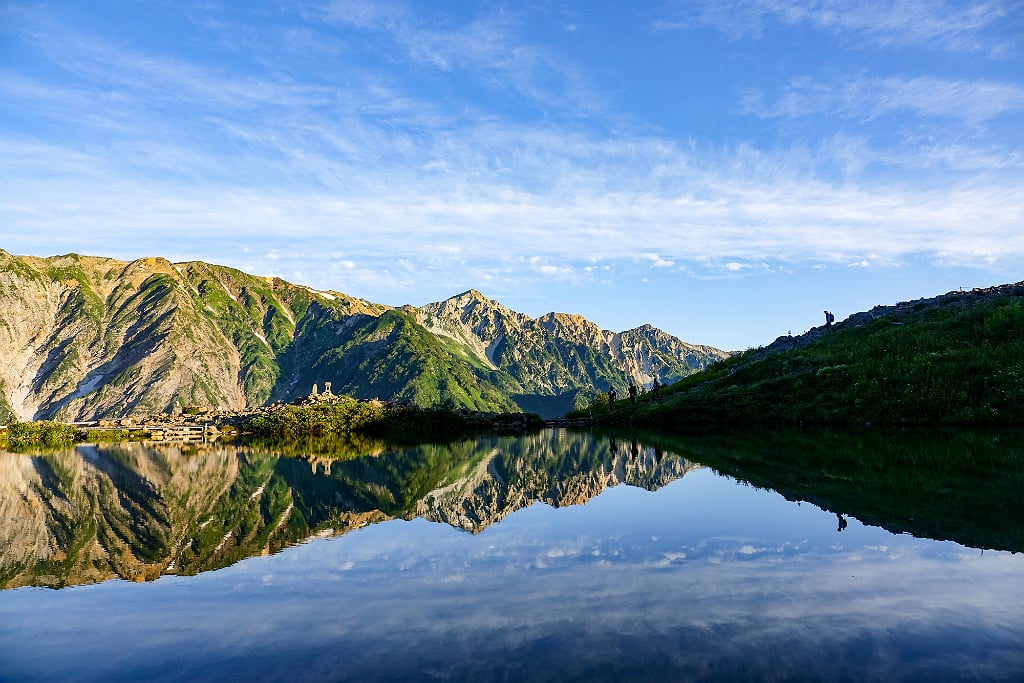
From Happo Pond, the trail continues all the way up the ridge to the peak of Mt. Karamatsu, surrounded in every direction by the majestic scenery of the Japanese Alps and the idyllic Hakuba Valley below.
From the top of mountain, you can see sturdy Mt. Goryu, the Hotaka mountains and Mt. Yari to the south. To the west, Mts. Tateyama and Tsurugi.
When to Go
June to October (Happo One Alpine Lift operating period)
Details
See Mt. Karamatsu in our database
One to Two Day Hikes
Mt. Yake
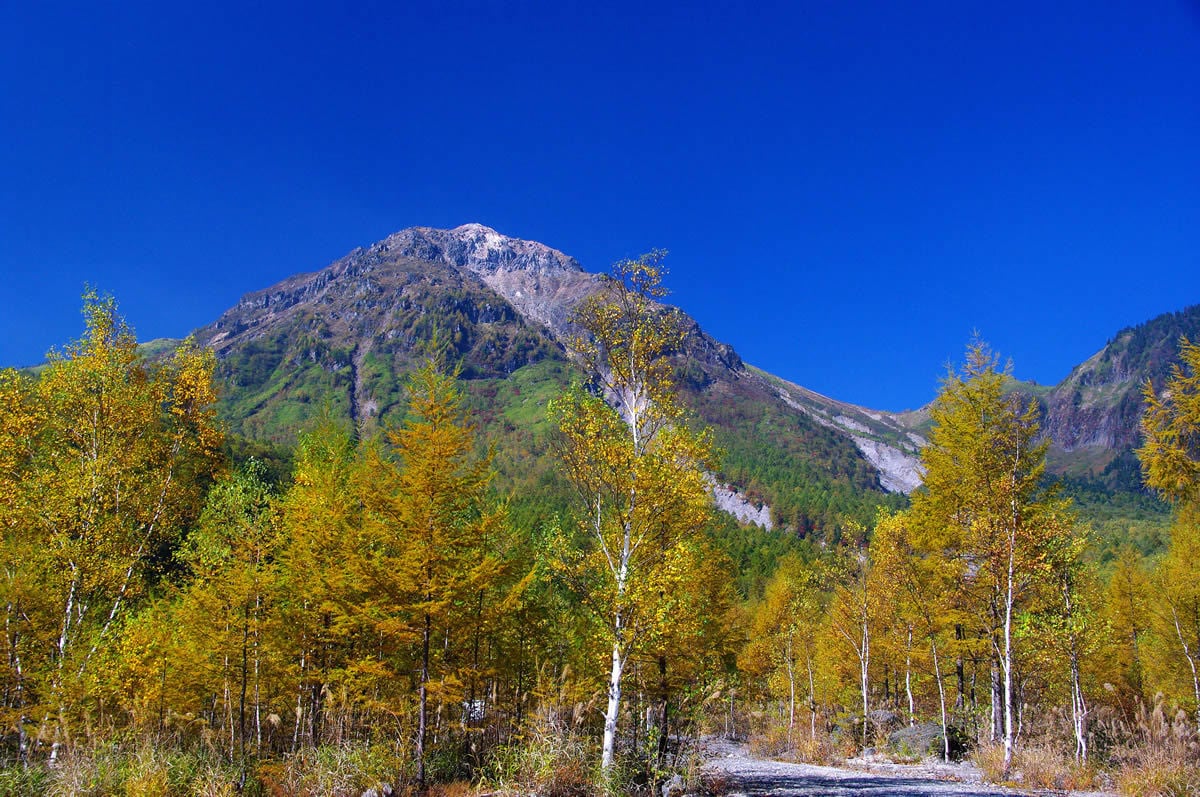
This 2,444-meter-high active volcano is located by the entrance to Kamikochi, looming over the ponds of Tashiro and Taisho—both of which formed in 1915 after the volcano erupted and dammed the river.
The trail to Mt. Yake extends from the Shinnaka-no-yu hot spring area outside of Kamikochi to Tashiro bridge within the national park. The traverse features varied and rich terrain and is certainly a much more exciting journey into Kamikochi than riding the bus through Kama Tunnel.
The peak of Mt. Yake is otherworldy. The rocky mountaintop is stained in reddish brown and smoke billows out from fumaroles near the trail. Below the peak, a small body of water sits in the volcano’s caldera.
From here you can see the Azusa River meandering along the Kamikochi Basin as well as the mountains of the Northern Japanese Alps, notably the Hotaka mountains and Karasawa Col. To the west, you can see Kasagadake along the Hida mountain range. To the south, Mt. Ontake and Mt. Norikura.
When to Go
mid-June to October
Details
Mt. Chougatake
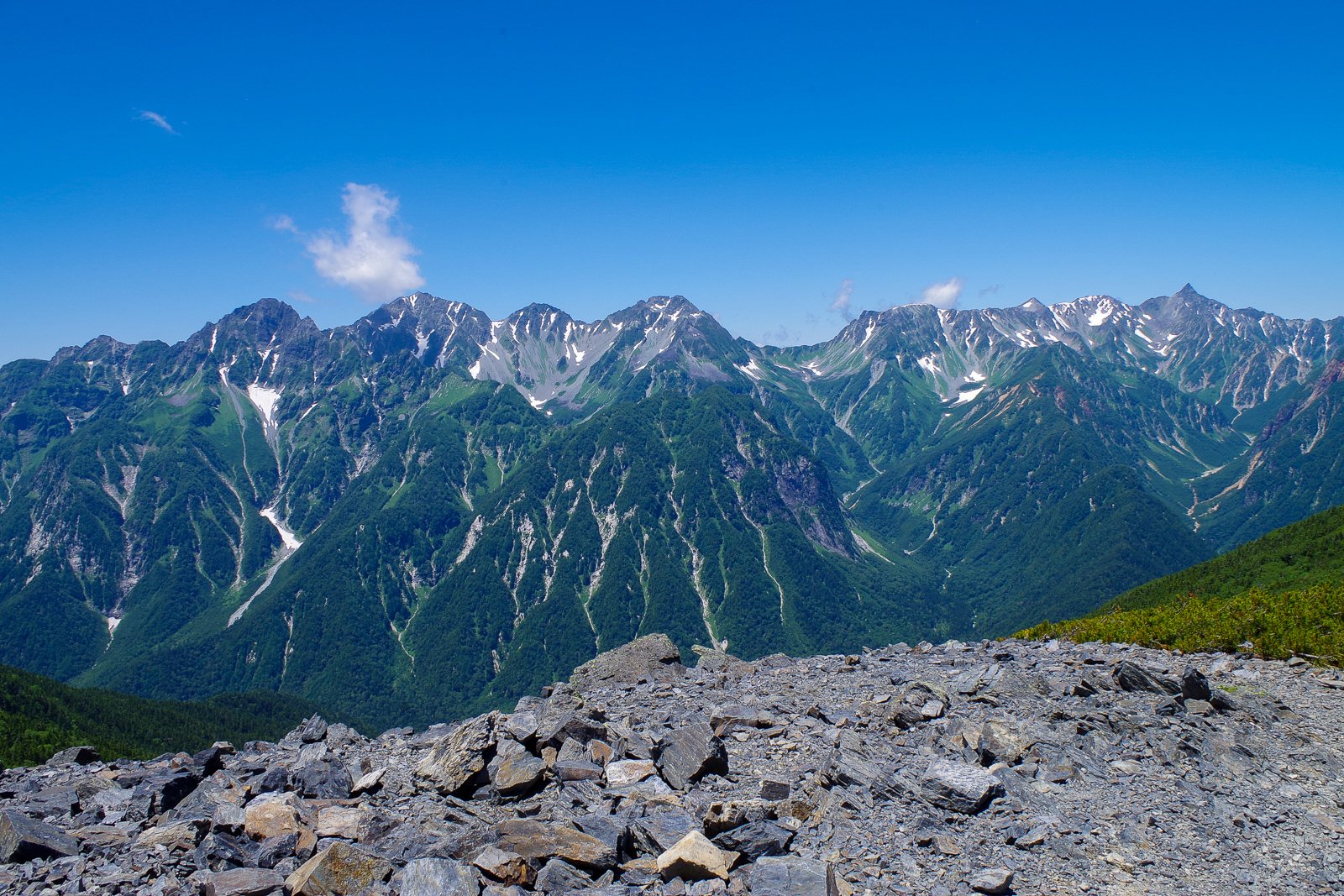
Mt. Chougatake is a popular hiking destination in the Northern Alps thanks to its panoramic mountainous views featuring Mt. Hotaka, Mt. Yari and the infamous Daikiretto pass.
There are numerous trails leading to Mt. Chougatake, most notably the Mitsumata route from Azumino and the Tokusawa route from Kamikochi. Neither are particularly technical, but can take a while to climb, so you may consider spending the night on top of the mountain or down in Kamikochi if you’d like to take it easy.
The top of the mountain is quite spacious, with a mix of gravel, rock and low pine shrubbery. Chougatake Hutte sits in the middle of the ridgeline and there are several areas to pitch tents nearby. You could comfortably relax here all day, just admiring the views of the Northern Japanese Alps directly in front of you, or, if you’re lucky, catch a sea of clouds over Azumino.
When to Go
July to early October
Details
Read more about climbing Mt. Chougatake
Mt. Tsubakuro
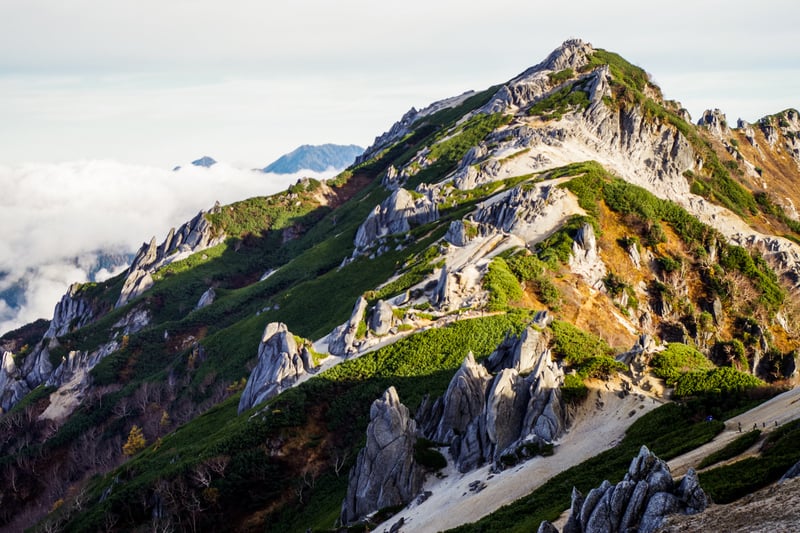
Mt. Tsubakuro is one of the Northern Alps' most scenic mountains. In addition to excellent views of Mt. Yari, the mountain itself is a work of art in a palette of tan, granite and green.
One of the mountain’s most notable features is its natural sculptures. Bizarre granite formations line the ridge to the mountain peak, taking shapes reminiscent of dolphins, gorillas, and even a pair of glasses. At their feet, you may also find delicate alpine flowers such as komakusa, or possibly even some nesting rock ptarmigans—Nagano’s prefectural bird.
The enormous Enzanso lodge, with a capacity of 650 persons, sits atop the ridge not far from the peak. It has almost all of the amenities you could ask of a mountain lodge (excepting natural hot springs), making it a great place to stay for first-time overnighters. Be sure to stop by the café for their coffee and cake set to recharge.
When to Go
July to early October
Details
Read more about climbing Mt. Tsubakuro
Two Days or More
Mt. Shirouma and the Hakuba Daisekkei
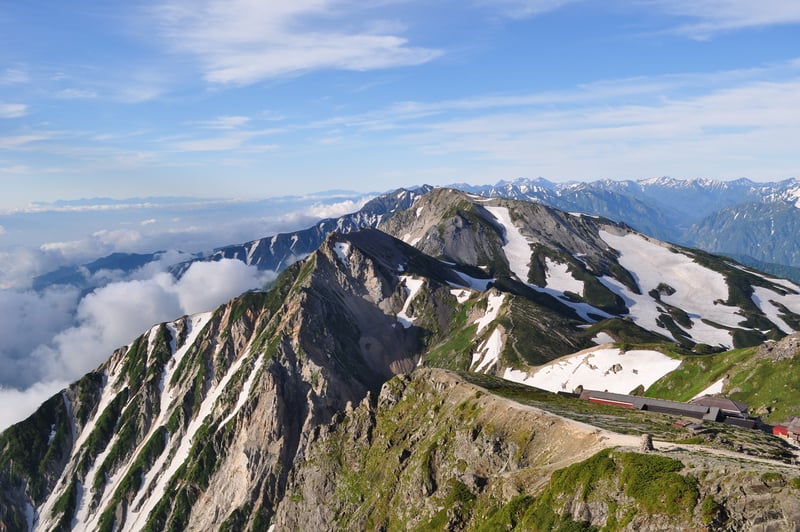
On the border of Nagano and Toyama prefectures is Mt. Shirouma, the highest peak in the Hakuba Valley at 2,932 meters high. The area is a treasure trove of alpine plants and has gorgeous views of the Tateyama mountain range to the west including Mts. Tateyama and Tsurugi.
The name of the mountain is said to come from the snowy shapes that would appear in spring, which looked to farmers like a plow horse (shirokaki-uma). The name eventually shortened to shirouma, or “white horse,” whose Chinese characters can also be pronounced as hakuba, hence the “Hakuba” Valley.
One of the most memorable characteristics of the hike is the climb up the Daisekkei, a snowy valley that extends for several kilometers up the side of the mountain. Cool winds blow through the valley even in summer—a welcome respite from the sweltering heat.
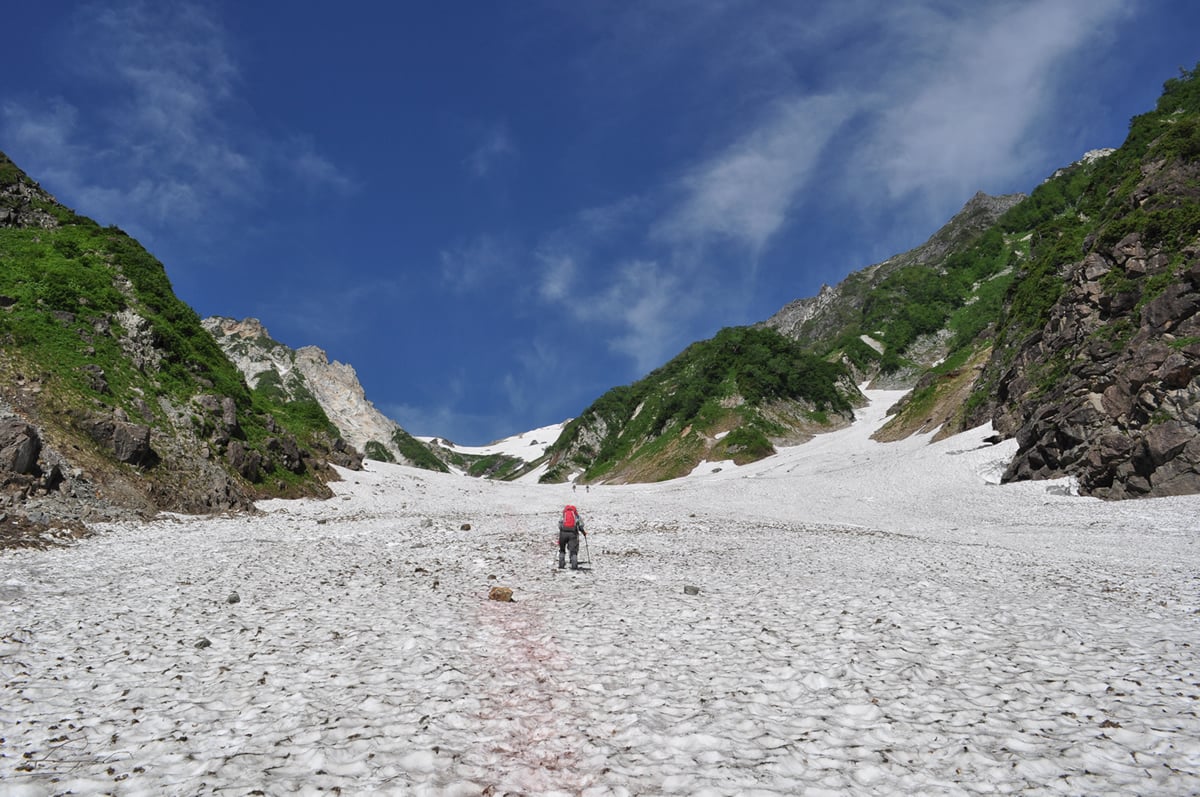
Most hikers traverse across the ridgeline, summiting the peak of Mt. Shirouma and continuing north, eventually passing Mt. Korenge and Hakuba Oike Pond before descending into Tsugaike Nature Park, which is serviced by the gondola lifts of Tsugaike Ski Resort during summer.
When to Go
July to October
Details
See Mt. Shirouma in our database
Three Days or More
Mt. Yari
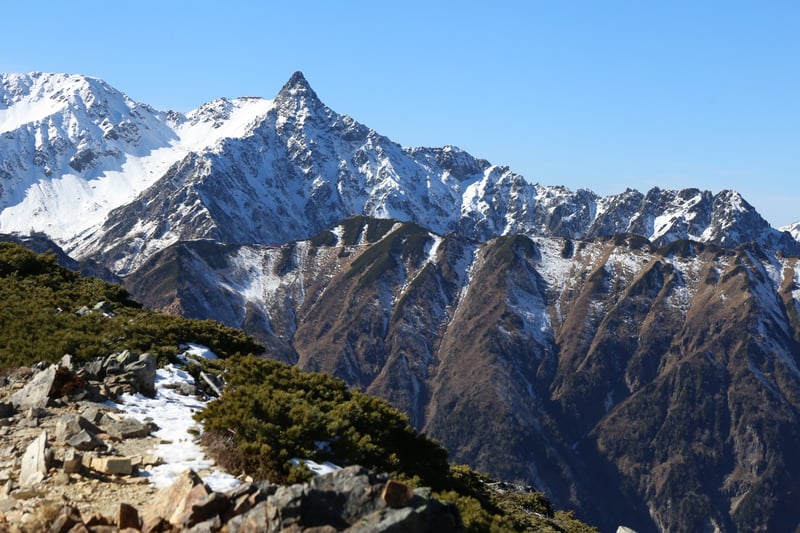
Spear-like Mt. Yari is the fifth tallest mountain in Japan at 3,180 meters high and one of the most recognizable peaks of the Japanese Alps. Often likened to the Matterhorn of the Swiss Alps, it is one of the most sought-after peaks by Japanese mountain climbers.
While there are many different routes to the top of the mountain, the most common begins from Kamikochi. Following the Azusa River all the way to the back of the basin, it continues along the Yarisawa Gorge and climbs Oyari Moraine before reaching the ridgeline. From there, you can clearly see the peak, the final and steepest obstacle.
When you do reach the tip of the spear, you’ll feel like you’re above it all, gazing over all of the peaks of the Japanese Alps.
When to Go
July to September
Details
Additional Information
Mountain climbing is incredibly rewarding but comes with its fair share of risks. To minimize risk, proper preparations and planning are a must. These additional resources may help you in planning for your next hike in the Japanese Alps:
Accommodations
If you plan to stay the night on the mountain, we recommend making reservations at the mountain lodge in advance. Due to COVID-19, some lodges are currently not accepting walk-ins for private/shared rooms. You can see information for mountain lodges on each mountain's database page.
Conclusion
The mountains of the Northern Japanese Alps are both precipitous and beautiful. Anyone can appreciate them from afar, but the best views of these peaks are reserved for those willing to climb to the front-row seats.

